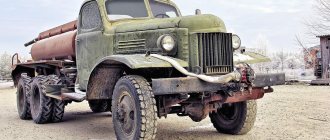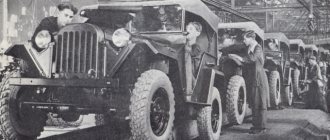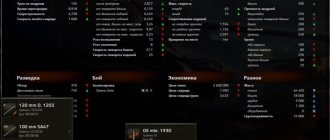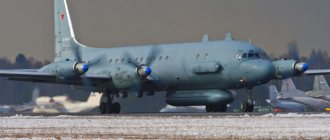The Il-14 is a Soviet-designed short-range twin-engine piston aircraft.
It is an improved version of the twin-engine passenger aircraft Il-12. Created to improve the flight program in case of failure of one of the engines. The successfully designed new aircraft was used in almost all spheres of life, from science and cargo transportation to military applications.
Its design turned out to be durable and unpretentious, and control was easy and reliable, which made it possible to use the aircraft in harsh Arctic conditions, where other aircraft could not withstand and failed.
Development history
The predecessors of the Il-14 aircraft were the short-haul passenger models Li-2 and Il-12. In the post-war period, the aviation of the Soviet Union was faced with the question of the need to create an aircraft that would ensure continued takeoff even if one of the engines failed. In such situations, it will be safer for the plane to continue climbing than to try to stop it.
Tests of the Il-12, which took place at the end of 1946, showed that it was not capable of such maneuvers. A decision was made to construct an improved aircraft.
The first attempt to design the Il-14 airliner showed that the new model differs from the Il-12 only in weight and dimensions, and the layout and aerodynamic parameters are almost similar. The developers tried to introduce more powerful engines into the new model of the IL-14 airliner, assuming that if one of them failed, the second would be able to fully compensate for its work and take the load upon itself. But this idea turned out to be ineffective. The designers did not take into account the thrust of the new, more powerful engines. If one failed, the plane skewed towards the operating one, and it would not have been possible to level it without the intervention of experienced pilots.
The correct decision turned out to be supplying the new Il-14 with a slightly more powerful ASh-82 FN engine and changing the configuration of the aircraft’s wings. A new type of wings, which had a changed angle, made it possible to reduce drag. At the same time, their load-bearing force remained almost unchanged. As a result, the airliner was able to get off the ground faster and gain altitude.
Despite the changes in the external characteristics of the IL-14, its layout data remained identical to the passenger compartment of the IL-12. The plane was designed for 18 passenger seats.
Considerable attention of the developers was paid to increasing the level of safety of flight and landing of the aircraft in harsh weather conditions. A special place was given to improving the anti-icing system and supplying the new aircraft with flight, navigation and radiation equipment, advanced at that time. Engine exhaust gases were used as the basis for the anti-icing system.
The IL-14 first took to the skies on July 13, 1950, but the flight did not last long. Within 15 minutes he had to be grounded due to severe overheating of the heat exchangers. The problem was solved after wrapping the pipeline with asbestos mesh. The front part of the aircraft also underwent changes. The cockpit has become larger and visibility has increased. Two and a half months later, the final version of the Il-14P airliner was completed. The assessment of the new aircraft turned out to be very high.
Production
Serial release:
Plant No. 84 (Tashkent)
- Il-14: 1954 - 28 aircraft, 1955 - 52 aircraft, 1956 - 115 aircraft;
- Il-14P: 1957 - 117 aircraft, 1958 - 1 aircraft;
- Il-14T: 1956 - 10 aircraft, 1957 - 26 aircraft, 1958 - 29 aircraft.
Plant No. 30 (Moscow)
- Il-14P: 1956 - 249 aircraft, 1957 - 114 aircraft, 1958 - 2 aircraft.;
- Il-14T: 1956 - 23 aircraft, 1957 - 205 aircraft, 1958 - 63 aircraft;
- Il-14FC: 1957 - 25 aircraft, 1958 - 6 aircraft.
Avia plant (Czechoslovakia)
Total - 203 aircraft. AVIA-14-42 “Super” aircraft, designed for 42 passenger seats, were produced in a small series.
Dresden Aircraft Factory (GDR)
In total - 80 aircraft.
The total number of IL-14s produced: 1348 aircraft (USSR - 1065, Czechoslovakia - 203, GDR - 80), of which at least 500 units were exported.
Features of the Il-14 aircraft
Today there are only three working IL-14 versions left:
• Il-14 “Soviet Union” RA-05463;
• Il-14T “Penguin” RA-1114K;
• IL-14T “Blue Dream”.
Their restoration, as well as the costs, fell on the shoulders of three aircraft enthusiasts. Restored copies are used at small airfields in the country.
According to data published in 2006, about 70 Il-14 aircraft were lost in disasters, accidents and during military operations.
The liner enjoyed worldwide popularity and was involved in passenger transportation in 31 countries around the world. A large number of modifications created have made it possible to use it in many areas.
Background
For the huge country that was the Soviet Union, the problem of internal passenger transportation could be solved by a regional aircraft. Such a machine, small in size and unpretentious to takeoff and landing conditions, could easily transport 30-100 passengers over fairly long distances within one region. A regional civil aviation fleet could connect the vast Siberian expanses, the Far North and the Far East with passenger flights to the central regions of the country.
Successful foreign experience in the development of this segment of civil aviation could be useful here. In the United States, which also has vast distances, DC-3 aircraft were successfully used on domestic routes after the war. The UK also followed this path, which in a short time managed to create a fairly decent fleet of regional passenger aviation, equipped with De Havilland Dragon Rapide passenger aircraft.
Before the era of jet passenger aviation, domestic passenger lines operated on aircraft with piston and turboprop engines. The Americans created the Convair 440 and DC-6 passenger airliners, which became practically twins of the models created by Soviet aircraft designers. The Soviet passenger Il 12 and its improved version Il 14, and overseas aircraft are very similar in appearance.
Work on the creation of regional passenger aircraft in the USA and the USSR was carried out almost simultaneously. The Soviet Il 12 took off in January 1946, and only years later, in March 1947, an American aircraft made its first flight. For its time, the Soviet aircraft had satisfactory flight characteristics. This was reflected in the subsequent work of the Ilyushin Design Bureau, where they relied on the creation of a more reliable passenger aircraft. The Il 12 aircraft became the base model for the further development of a more advanced aircraft.
The designers who took up the development of the new machine were captivated by the flight performance data possessed by Ilyushin 12th. The aircraft's cruising speed was 350 km/h with a flight range of 1700-1900 km. The plane had a passenger cabin for transporting 20-30 passengers, and for takeoff and landing, runways not exceeding 1000 m in length could be used. For takeoff, the car needed 500 meters of flat ground. During landing, the plane's mileage did not exceed 700-800 meters. With such data, Soviet passenger aircraft had a wide range of operation, including areas with severe climatic conditions.
Versions
The most popular modifications include:
• IL-14 - the first basic version;
• IL-14T - transport model;
• Il-14P is a passenger aircraft designed to carry 18 passengers;
• Il-14M - modernized cabin, accommodating up to 32 passenger seats;
• Il-14G is a cargo aircraft. Equipped with an extensive cargo compartment that can accommodate loads up to 3500 kg, a reinforced floor and a modified cargo door;
• Il-14PS, S, SI, SO - highly comfortable versions of the Il-14 aircraft, created specifically for transporting high-ranking officials;
• IL-14 LIK, LL - flying laboratories;
• Il-14 FK, Il-14 FKM - reconnaissance models for aerial photography, were equipped with the most advanced navigation technology and equipped specifically for aerial photography operations. They played a huge role in the exploration of remote areas of the country. Contributed to the study of more than two million square meters of remote forest areas.
Overview of the aircraft and its characteristics
The Il-14 aircraft is a low-wing aircraft with a normal layout. The tail unit is single-finned. The aircraft's power plant is represented by two piston engines, the model of which depends on the specific modification of the Il-14 and the year of manufacture. The maximum passenger capacity of the IL-14 cabin is 36 people.
Flight characteristics of the aircraft:
| Length, m | 21.3 (IL-14P), 22.3 (starting with Il-14M) |
| Wingspan, m | 31,7 |
| Height (at tail), m | 7,8 |
| Engines | 2 Shvetsov ASh 82T with a power of 1950 hp. With. |
| Max. speed, km/h | 430 |
| Cruising speed, km/h | 345 |
| Flight range, km | 1250 |
| Flight altitude, m | 6500 (with oxygen equipment) |
| Empty aircraft weight, kg | 12 700 |
| Maximum take-off weight, kg | 18 500 |
| Maximum number of passengers | 36 |
| Crew, people | May 02 |
Exploitation
In October 1950, the first flight of the second experimental aircraft, which was named Il-14P, was carried out. It was piloted by V.K. Kokkinakin. Based on the results, it was proven that the new model is superior to the previous IL-12 in maximum speed, which has increased by 30 km/h and flight range. After a series of test work, the IL-14 went into serial production in 1953 at the aircraft manufacturing plant in the city of Tashkent, and after that it began to be produced at the Moscow plant No.30. The operation of new aircraft for the purpose of passenger transportation began in November 1954 at Aeroflot airfields, where the aircraft showed the highest level of reliability, ease of maintenance and flight safety.
The airliner was operated at Soviet airfields until the end of the 80s, after which it was no longer produced. And since 1986 they stopped repairing it altogether. Over the entire history of production and operation, between 1500-4000 copies were produced, the exact figure is unknown. Of these, most were damaged while transporting military cargo and at military airfields; several vehicles were damaged. The long service life of Il-14 aircraft can be explained by its durability and quality. In addition, at that time there was no airliner with similar quality characteristics and there was simply nothing to replace it with.
Combat use
In December 1938, a conference was held between representatives of the country's Air Force, at which the question was raised about the results of the first two years of using DB-3 aircraft.
They were disappointing. The aircraft had a huge number of design flaws: cracks often appeared in the fuel tanks, gasoline leaks, sometimes the brakes failed, landing gear collapsed, and the military expected greater reliability and reliability from the M-87 engines. And this is not a complete list. This also includes the car’s long take-off run on takeoff, the tendency to turn to the right, and the difficulty of steering. This is explained by the fact that the plane had a rear alignment, which is why the pilot could not let go of the steering wheel.
During the Soviet-Finnish War, which preceded the Great Patriotic War, the Finnish military found a “dead zone” in the DB-3 from the bottom of the fuselage. Therefore, it was necessary to equip an additional turret for the shooter here. Before the start of the war with Germany, it was not possible to re-equip all aircraft with improved weapons and replenish them. The introduction of a 4th member to the crew led to an even greater shift in the center of gravity towards the tail, and the bomber's directional stability deteriorated even more. Due to the saving of duralumin in wartime, many elements in the aircraft design were replaced with wooden ones, which were often destroyed during landing.
According to the pilots, the most difficult time on the plane was the moment of takeoff, even without carrying weapons, the IL-4 had very poor stability and required constant “steering” from the pilot to follow a given course. There was no autopilot.
The landing process was also not easy. Exaggerated pulling of the trimmer resulted in pitching. That is, the danger to the lives of crew members was present even after completing the combat mission. Nevertheless, experienced pilots quickly got used to flying the Il-4.
IL-4 video
https://youtube.com/watch?v=papmdeu-LZg
A total of 6,883 units of the Il-4 aircraft of various modifications were produced. Most of them were destroyed by enemy fighters and air defense systems. Another part of the planes was destroyed in accidents and disasters. The decommissioning of long-range Il-4 bombers from combat duty in Air Force units began in 1947.
Monuments
Il-14 in Balashov
Il-14 in Begoml, Belarus
Il-14 in Sinsheim, Germany
In the Main Branch Museum of the History of Civil Aviation. City of Ulyanovsk. No. USSR-06132.
- The polar aviation aircraft Il-14P is on display at the Kiev State Aviation Museum.
- The Kurgan Aviation Museum displays the Il-14T transport aircraft.
- In the center of the village of Brinkovskaya, Krasnodar Territory.
- In the cities of Begoml and Svetlogorsk, Republic of Belarus. (Dismantled in Svetlogorsk, 04/29/2011 after restoration installed in the Aircraft Museum, Borovaya, Minsk)
- At Talagi airport (Arkhangelsk).
- At the Air Museum Sinsheim, Germany.
- On the territory of the Museum of the Vietnamese People's Army in Hanoi (decommissioned Il-14T tail number VN-C516 aircraft).
- In the city of Balashov, Saratov region, on the territory of OJSC "Rembaza" and on the territory of BVVAUL.
- At the airport in Ulaanbaatar Mongolia 47°50′38″ N. w. 106°46′05″ E. d. (G) (O)
- In the city of Kuibyshev, Novosibirsk region.
- In the village of Cape Shmidt (urban-type settlement), Chukotka Autonomous Okrug.
- At the airport of Burgas (Sarafovo), Bulgaria
- At the airfield in the village of Froly, near Perm, board USSR-29112.
Il-14 at Talagi airport (Arkhangelsk)
Let's summarize the comparison of two aircraft from the Second World War
Before us are not just two different aircraft. We looked at two concepts for the combat use of light bomber aircraft - the Il-2 aircraft, and the close air support (CAS) aircraft - which was the Ju 87 Sturzkampfflugzeug aircraft.
The analysis was not intended to prove that the German Ju 87 aircraft was cooler than the Soviet Il-2 aircraft. The analysis set as its goal a clear demonstration that comparisons of these two types of aircraft - symbols of the Second World War - are not only incorrect, but also inappropriate.
The German Ju 87 Stuka aircraft was created for the concept of close air support (CAS) for infantry and tanks. The Soviet Il-2 aircraft was created for the concept of a mass raid by light bombers. It is not aircraft that need to be compared, but two concepts of combat use.
The German Close Air Support (CAS) concept has not undergone significant changes at present. The technology has changed, information about weapon capabilities has appeared, but the CAS concept has not changed. The only thing that is not currently practiced on CAS aircraft is dive bombing, as the capabilities of high-precision weapons have become available.
The Soviet light bomber concept was completely destroyed during World War II. This concept is good for everyone and provided for almost everything, except... except for the active actions of aviation from the neighboring side. In June and July 1941, Soviet aviation, having a 6-fold numerical superiority, was never able to launch a surprise air raid on at least one German airfield.
Ultimately, the Soviet Air Force aviation turned out to be unprepared for the appearance in the skies of an enemy more well-trained than the Soviet pilots.
Literature
- "I fought on a bomber." Drabkin A.V.
- "Wings of the Motherland 5-1998". “Long-range bomber DB-3” N. V. Yakubovich.
- Novozhilov G.V. and others.
From the history of Soviet aviation: Aircraft from the S.V. Ilyushin Design Bureau. — 2nd edition. - M.: Mechanical Engineering, 1990. - P. 34-62, 367-368. — 384 p. — ISBN 5-217-01056-8. - Shavrov, V. B.
History of aircraft designs in the USSR 1938-1950. - M.: Mechanical Engineering, 1988. - 568 p. — 20,000 copies. — ISBN 5-217-00477-0. - Gordon, Yefim and Khazanov, Dmitri.
Soviet Combat Aircraft of the Second World War. - Hinckley, England: Midland Publishing, 1999. - Vol. 2. Twin-Engined Fighters, Attack Aircraft and Bombers. — P. 172, 97-104. — 176 p. — ISBN 1-85780-084-2.
Notes
- ↑
- Talikov N.D.
Three quarters of a century of “Ilyushin’s” sky... - M.: Bulletin of the Air Fleet, 2008. - P. 147 - ↑
- ↑
- Talikov N.D.
Three quarters of a century of “Ilyushinsky” sky... - M.: Bulletin of the Air Fleet, 2008. - P. 131-132 - ↑ Egorov Yu. A.
Aircraft from S. V. Ilyushin Design Bureau. - M.: RUSAVIA, 2003. - P. 221 - Talikov N.D.
Three quarters of a century of “Ilyushin’s” sky... - M.: Bulletin of the Air Fleet, 2008. - P. 136 - ↑ Talikov N.D.
Three quarters of a century of “Ilyushin’s” sky... - M.: Bulletin of the Air Fleet, 2008. - P. 138 - Talikov N.D.
Three quarters of a century of “Ilyushin’s” sky... - M.: Bulletin of the Air Fleet, 2008. - Page. 138—139 - Talikov N.D.
Three quarters of a century of “Ilyushinsky” sky... - M.: Bulletin of the Air Fleet, 2008. - P. 140 - Talikov N.D.
Three quarters of a century of “Ilyushin’s” sky... - M.: Bulletin of the Air Fleet, 2008. - P. 145 - Data source: Talikov N.D. Three quarters of a century of “Ilyushin’s” sky... - M.: Bulletin of the Air Fleet, 2008. - 464 p. - pp. 408-410. — ISBN 5-901808-13-4
- ↑
- .
- (Accident card). Aircraft accidents, incidents and air crashes in the USSR and Russia. - “at an altitude of about 100 m, the left and then the right engine failed.” Retrieved October 24, 2010.
- . Aviation in cinema
. Aviation history website. Retrieved May 6, 2022. - (unavailable link). IL-14. Retrieved May 6, 2022.











